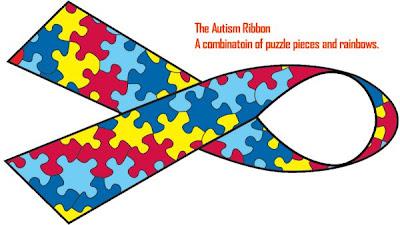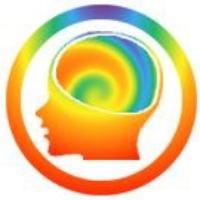They say that politics is one of the two subjects that should never be discussed at parties. I've never really found that to be true. Autism politics however is an entirely different story. It always seems to start fights. I've discussed autism politics on this blog before though not intentionally but this time, I want to tackle the problem in a more deliberate way.
In the past, I've talked about advocacy, the curbie movement and some of the initial reactions to the proposed changes to the DSM. Recently there was a flare up of political debate following some comments on another blog but I'm not here to talk about that one - it's too hot.
It did get me thinking however. Perhaps if the feelings of people on different sides of the debate could be explored in peaceful circumstances they could promote understanding instead of conflict. It's a high-handed idea with little real chance of success but I think it's worth a shot.
To that end, this post is concerned with the two main symbols of autism/aspergers; the jigsaw puzzle piece and the rainbow. I have my own views on both of these but I'm hoping that you, my readers will add to the list of reasons (why or why not) instead of just choosing sides.

The Case For
The jigsaw puzzle piece suggests that although we're all different shapes and although we may seem odd by ourselves, together we make up something beautiful which is more than the sum of its parts. Other explanations I've heard are; "each child in themselves is a piece of puzzle of autism.". Actually, I'm not sure if that counts for or against the puzzle piece.
In some cases, the "autism pieces" of the puzzle are rainbow coloured while the "neurotypical pieces" are boring gray colours and all the same. There's also the autism ribbon shown above which is widely accepted. I've heard that some people are happy with the colours and the puzzle pieces but dislike the idea that a ribbon makes them seem like a "survivor". In the end though, I don't think you can please everyone.
As a symbol, the puzzle piece is easy to draw and quite recognisable although having met someone with a puzzle piece tattoo (you know who you are), I was quite surprised to be told that it was because she "belonged" to a group (a family) and was a bit of a puzzle. It wasn't the answer I was expecting.
The rainbow colours make a good symbol and usually signify the spectrum. In this case, the light spectrum is symbolising the autism spectrum. It makes sense and it looks pretty. Personally, I like the fact that the spectrum has a specific sequence. It's not that there is a specific order to different kinds of autism, it's just that many people with ASDs, myself included, love putting things into order.
 You'll notice that I use the rainbow (and a head/brain) symbol for this blog. I think it signifies my own position. I like the rainbow but not the puzzle piece. I also deliberately chose a slightly different spectrum for my image because I wanted to suggest that the spectrum looks different depending upon where you are.
You'll notice that I use the rainbow (and a head/brain) symbol for this blog. I think it signifies my own position. I like the rainbow but not the puzzle piece. I also deliberately chose a slightly different spectrum for my image because I wanted to suggest that the spectrum looks different depending upon where you are.The last point that I want to make about the rainbow symbol is that to me it says that we align with nobody and everybody. It's not pink or blue for boys and girls and it's not country or racial colours. We're all in it together. We can be as individual as we like but we still fit into something. Essentially it says the same as the puzzle piece without the additional interpretation that there is a mystery to solve concerning us.
The Case Against
The puzzle piece symbol has generated quite a bit of anger and debate over the years and for many reasons.
There are those who say that it makes us out to be a game, a puzzle to be solved. This is not a good feeling to awaken in a group of people who are accustomed to being constantly poked, prodded, researched, surveyed and medicated by health professionals. We don't want to be studied and we don't want to be solved.
The group Autism Speaks (a whole political topic in itself which I may eventually discuss) chose the puzzle piece for their logo. The implication seems to be that once the puzzle is solved, everything will be alright. It's a curebie approach - or at least, that's how many people interpret it.
I haven't really noticed as many complaints about the rainbow though many teenage male aspies don't like the idea that they're represented by a bunch of "pretty colours".
A call for comments
So that's enough from me. There are good reasons both for and against the symbols and the colours. What do you think? Do you like one or the other? Do you have an alternative symbol you prefer? Does the symbol or the color stir good or bad feelings in you?

